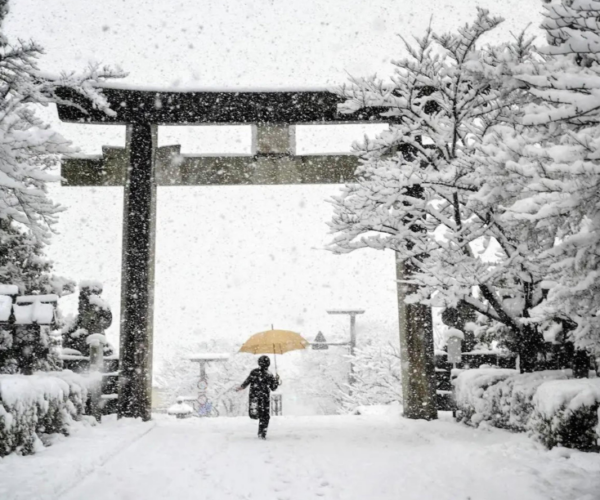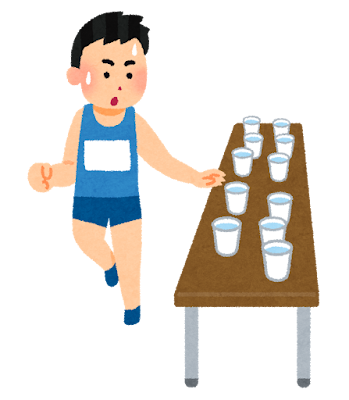How I Ran a Marathon in Japan
Tanner Halbert (Kochi)
Three years ago, if you told me I would run a full marathon in Japan, I wouldn’t have believed you. I started work on the JET Programme overweight and out of shape, weighing 300 lbs, or 136 kg.
My goal entering the JET Programme was to be a good role model for my Japanese students. I wanted to be the ideal ALT. A traveler, an adventurer, healthy, and fluent in a foreign language. I wanted to be brave. However, when I arrived in Japan, I lacked those qualities. I rarely exercised, my diet was poor, I spoke little Japanese, and I was intimidated by travel. If I was to set a good example, I had my work cut out for me.
Starting Out
In February 2022, my JET placement, Kuroshio town, hosted a 3km run, and I joined out of curiosity. It had been many years since I had attempted any distance running, and I wanted to gauge my ability.
I jogged around my neighborhood a few afternoons to prepare for the event, but that wasn’t enough. The day of the 3 km run, I struggled. My lungs were on fire. My legs burned. I did manage to complete the event, but I needed to spend the rest of the day recovering from the exertion. I was the slowest and least impressive runner. Regardless, my students saw me and cheered me on. I felt a warm glow from their encouragement. I was on the right track.
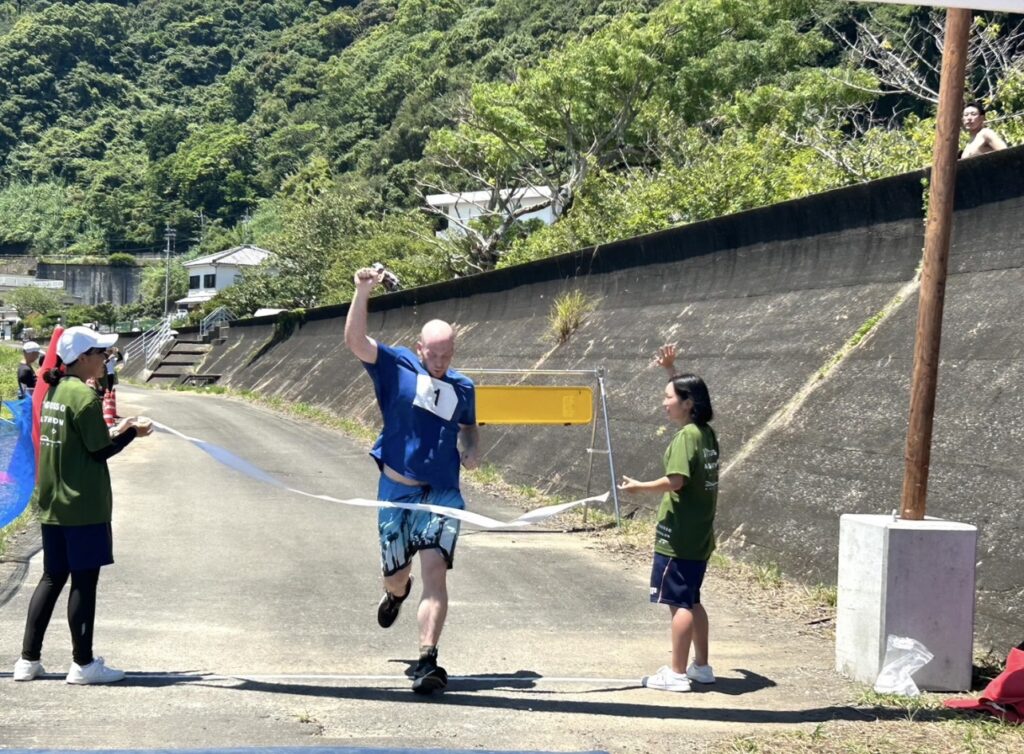
Ready to Climb
Summer of 2022, my Kuroshio friends planned to hike Mount Fuji. I took a leap of faith and decided to join them. At that point, I had done a small hike in Kochi city and the results were disastrous. It destroyed my legs and left me a sweaty mess. Mount Fuji is known for its difficulty and even poses a challenge to experienced hikers. To climb Mount Fuji, I needed to consistently train over the summer. I feared failing mid-ascent and having to climb back down. It was harsh, but that fear of failure was good motivation.
Cue the Rocky music.
Together with my friend Alex, I strapped on a backpack full of 1 litre water bottles and hiked up and down the eight flights of a local tsunami evacuation tower in the summer heat. This unorthodox training turned us into local legends in the community. Most importantly, combined with alterations to my diet, the training worked.
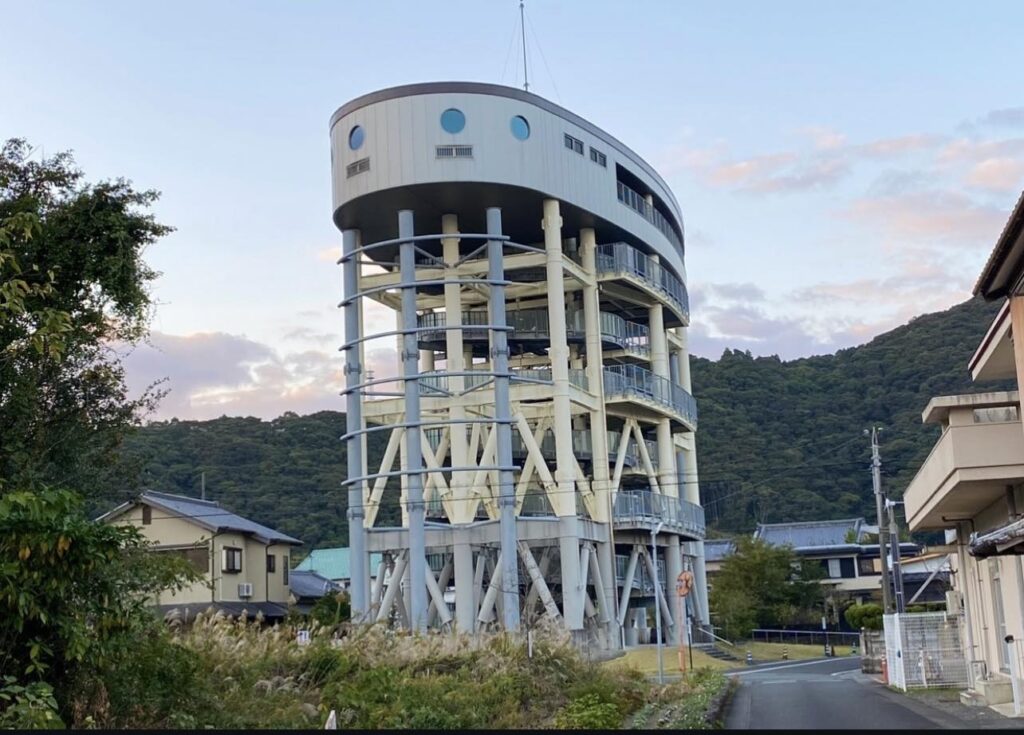
After two months of conditioning I summited Mount Fuji, but not without a fight. Though I had improved my physical condition, ten hours into the Subashiri Trail, it became a mental battle. With every step my head and heart pounded, but I didn’t give up. I pulled myself into the final station. The next morning, we completed the ascent and were gifted with an unforgettable Fuji sunrise.
It was a precious achievement. It was proof I could train my body and accomplish difficult physical feats. I could get stronger, healthier, and better.
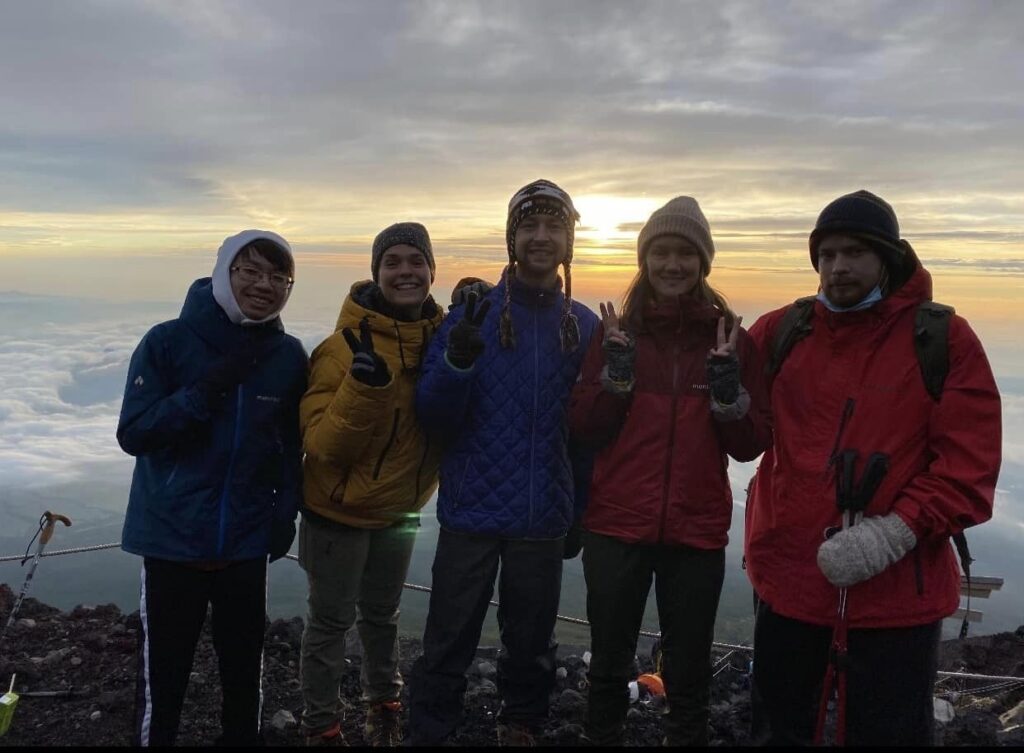
Further, Farther, Faster
I kept what I learned at Mount Fuji in mind, and my discipline continued to develop in early 2023. I started running up the tsunami tower almost every morning before work. Since I was overweight, I saw results quickly. After the first month of running and meal prepping, my Japanese co-workers noticed I was slimming down. After three months, comments about my weight loss came from everyone, and it was often the first thing people would say to me. Within six months, I was thinner and stronger. Acquaintances mistook me for a new person. 50 kg (110 lbs) down, my parents didn’t recognize me at the airport when I returned to visit Canada, but they supported my training efforts.
I graduated from the tsunami tower and began distance running, slowly building up my kilometers. First, I could run 4 km, then 8 km, then 10 km, and eventually I completed a half marathon. In October 2023, I set my sights on the 2024 Kochi Ryoma Marathon and kept running.
February 18th, 2024, the day of the marathon. I was nearly half the weight, but twice the man. It was hard, but I had trained appropriately and was prepared for the mental and physical difficulty. After running an intense five and a half hours with my friend Timonique, we crossed the finish line together, finishing our first marathon.
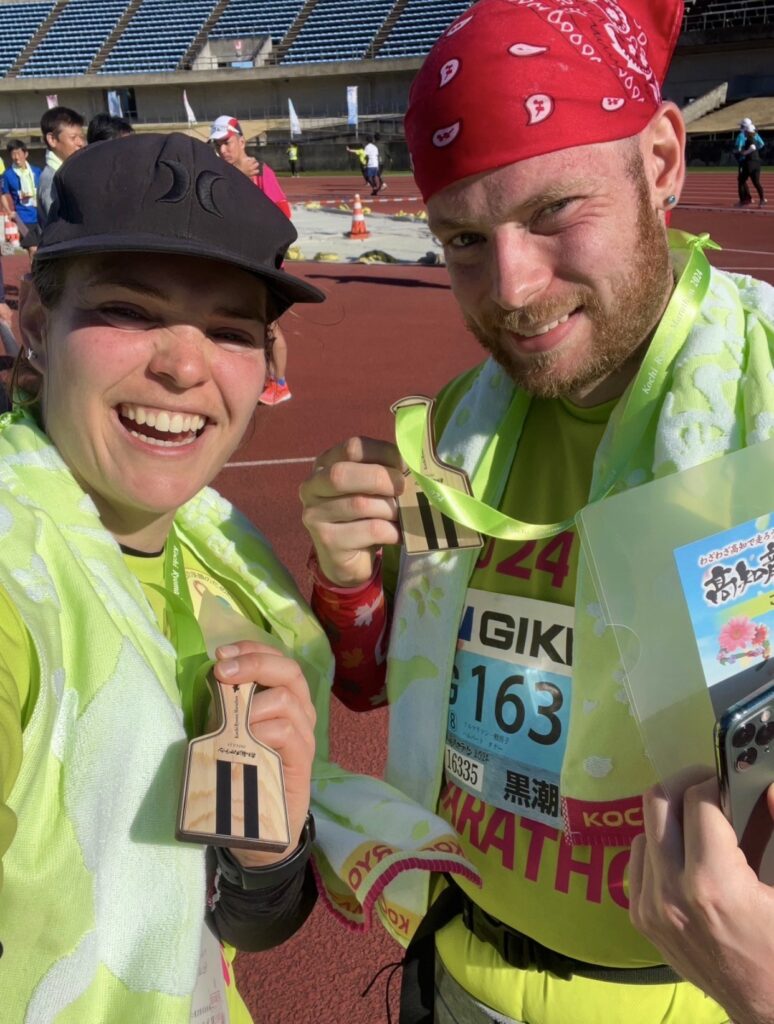
Perfect
I arrived in Japan wanting to be the perfect ALT, but my students will never have a perfect ALT. They have something better. They have an ALT who improved and continues to improve in small ways every day, and that’s something they, and everyone, can do too.
Tanner Halbert is a third-year ALT from Alberta, Canada. When he’s not playing sea shanties on the Kuroshio beach, he can be found running, swimming, and cycling around Kochi prefecture.
